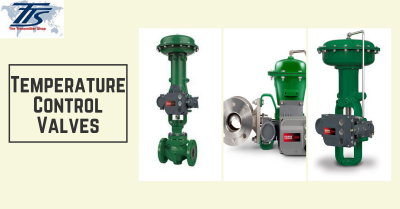Checking out the Capability of Modern Control Valves in Industrial Applications
Checking out the Capability of Modern Control Valves in Industrial Applications
Blog Article

Maximize Energy Cost Savings and Convenience With Advanced Structure Automation Controls
In the realm of modern style and center monitoring, the assimilation of sophisticated building automation controls stands as a pivotal improvement. By taking advantage of the power of automation, structures can adjust, respond, and develop in methods that were when unimaginable.
Energy Efficiency Benefits
Power effectiveness advantages can substantially reduce energy usage and functional prices in buildings. By implementing energy-efficient techniques and technologies, structure proprietors and drivers can attain substantial cost savings while additionally adding to environmental sustainability. One of the main advantages of enhancing energy performance in buildings is the decrease of energy expenses. Energy-efficient systems, such as innovative structure automation controls, can enhance using resources like home heating, cooling, and illumination, leading to lower power costs gradually.
In addition, boosted power performance can extend the life-span of structure tools and systems. By operating a lot more efficiently, heating and cooling systems, lighting fixture, and other building parts experience less damage, causing lowered upkeep and replacement costs. Additionally, energy-efficient structures commonly regulate higher residential property values and rental rates, providing lasting monetary advantages to proprietors.
In addition, power effectiveness can boost owner convenience and productivity. Properly regulated interior atmospheres with optimum lights and thermal problems create an even more pleasurable and helpful office, leading to improved worker contentment and performance. In general, the power efficiency benefits connected with innovative structure automation controls are multifaceted, including price financial savings, environmental stewardship, and passenger wellness.
Boosted Convenience Control
Enhancing convenience control in building settings needs an advanced combination of sophisticated automation systems for ideal owner wellness. By utilizing advanced building automation controls, centers can tailor the interior environment to fulfill the specific needs and choices of occupants. control valves.
By incorporating these advanced controls, buildings can not just enhance comfort but additionally improve energy performance by enhancing system operations based on real tenancy and usage patterns. Ultimately, prioritizing resident comfort through sophisticated automation systems leads to an extra delightful and much healthier interior environment.
Functional Effectiveness Improvements

Furthermore, the application of real-time surveillance and analytics devices allows building operators to recognize energy ineffectiveness and functional abnormalities quickly. By continually keeping an eye on energy usage patterns and system efficiency metrics, changes can be made in real-time to optimize power consumption and ensure peak functional efficiency. control valves. In addition, integrating need action strategies into structure automation controls can additionally enhance functional performance by dynamically readjusting power usage based on grid conditions and pricing signals
Indoor Environment Optimization
Effective indoor climate optimization is a fundamental facet of building automation controls, guaranteeing occupants' convenience and well-being while optimizing energy cost savings. By utilizing sophisticated sensing units and controls, building automation systems can continually adjust and keep an eye on temperature level, humidity levels, air quality, and ventilation to develop an ideal interior environment. Maintaining comfy and regular problems not just enhances resident satisfaction however additionally increases performance and general well-being.
Interior climate optimization also plays a vital duty in power efficiency. By fine-tuning home heating, ventilation, and air conditioning systems based upon real-time data and tenancy patterns, developing automation controls can substantially lower power usage - control valves. For instance, implementing techniques such as demand-controlled air flow and thermal zoning can aid decrease power waste while guaranteeing that each location of the building receives the needed conditioning.

Sustainable Setting Development
Structure automation regulates not just maximize indoor climate problems for energy performance and passenger convenience yet also lay the foundation for developing a lasting environment through critical monitoring of systems and resources. By incorporating sophisticated structure automation technologies, such as sensing units, actuators, and smart software application, centers can keep an eye on and adjust power use in real-time to lessen waste and lower their carbon impact. These systems make it possible for anticipating maintenance, identifying possible problems before they intensify and enhancing equipment efficiency to enhance long life and efficiency.
In addition, lasting atmosphere development extends past energy administration to include water conservation, waste decrease, and indoor air top quality renovation. Structure automation controls can manage water usage, discover leaks, and ensure appropriate garbage disposal techniques, adding to overall sustainability initiatives. Furthermore, by keeping an eye on and controlling air flow and purification systems, these technologies enhance owner wellness and performance while decreasing energy intake related to heating and cooling procedures.
Conclusion
To conclude, advanced building automation manages offer substantial advantages in regards to power financial savings, convenience control, functional performance, interior environment optimization, and developing click a lasting environment. By carrying out these controls, buildings can accomplish ideal efficiency continue reading this while decreasing power usage and enhancing owner comfort. It appears that the use of advanced automation technology is essential in enhancing structure efficiency and producing a more sustainable future.
Energy performance advantages can considerably reduce energy consumption and operational expenses in buildings. On the whole, the energy efficiency advantages linked with sophisticated structure automation controls are complex, encompassing price financial savings, environmental stewardship, and resident well-being.
Furthermore, including demand response approaches right into structure automation controls can better boost operational performance by dynamically changing energy usage based on grid conditions and pricing signals.
Structure automation manages not only optimize indoor climate problems for energy performance and owner comfort however also lay the foundation for creating a lasting setting through calculated administration of systems and sources.In conclusion, progressed building automation manages offer significant benefits in terms of energy financial savings, comfort control, functional performance, interior climate optimization, and developing a sustainable setting.
Report this page